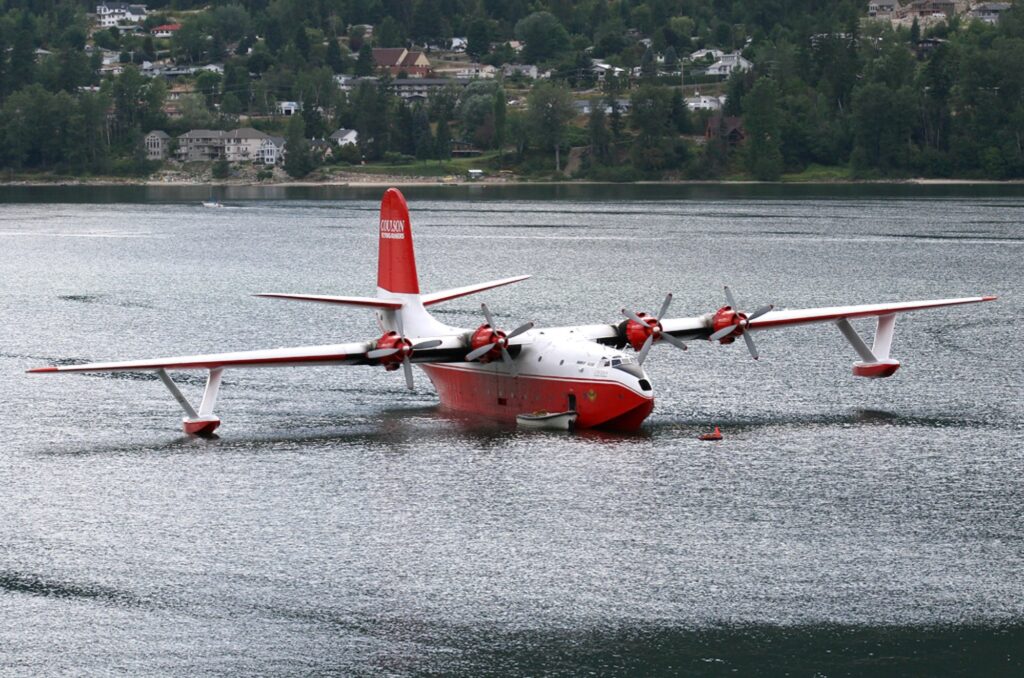The Martin JRM Mars, a water bomber that has been fighting wildfires for more than 50 years, has completed its final flight.
On August 11, 2024, thousands of people gathered at Patricia Bay Park, Saanich Peninsula in British Columbia, Canada, to see the last historic flight of the aircraft known as Hawaii Mars.
The Martin Mars took off from its usual base at Sproat Lake in Port Alberni and landed in Saanich Inlet. Nine Canadian Forces Snowbird jets escorted the last flight and executed a display for the audience.
Longtime pilot Peter Killin, who flew the Hawaii Martin Mars for the last time alongside Harbour Air’s Rick Matthews, said he was introduced to the aircraft back in 2000 and was hired to pilot the Mars a year later.
“It’s kind of sad that it’s the end of the story,” Killin told the local press. “It’s a new chapter coming [for the aircraft], it’s going to be good; people will get to see it.”
Coulson Aviation, the company that purchased the aircraft in 2007, revealed plans to give the aircraft to the BC Aviation Museum in North Saanich, Vancouver Island. The aircraft will be added to a permanent exhibit, earning the “Crown Jewel” title. The exhibit is scheduled to begin on September 28, 2024.

About Martin Mars
The Martin Mars is an extremely large aircraft, measuring 120 feet in length and boasting a wingspan of 200 feet. The bomber can release 25,000 liters of water in one pass. It completed its inaugural flight on June 23, 1942.
Designed and built by the Martin Company, the Hawaii Mars II (the original Hawaii Mars sank in 1945) was originally delivered to the US Navy as a long-range transport aircraft in 1946. It was sold and converted into an air tanker in 1959. C-FLYL was the only aircraft of its type still in service.
The water bomber dropped about 190 million liters of water on wildfires during its operational life. The Hawaii Mars had its last fire season in British Columbia in 2015.

